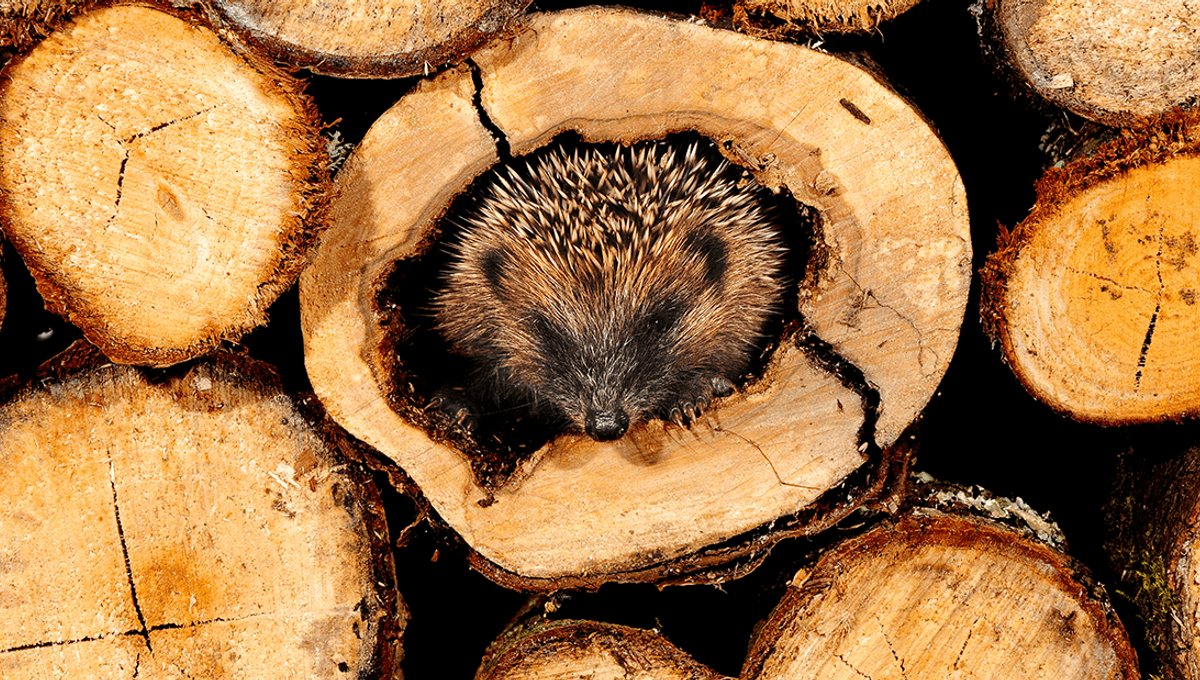
While most people could be forgiven for thinking that branches pruned off trees and bushes have served their purpose, keeping a few log piles in your garden could have some surprising benefits for the local wildlife.
First, think of a simple food chain. Decaying rotting wood is food and shelter for all manner of creepy crawlies, from woodlice to beetles and spiders, and even fungi like orange spot, as well as lichen, can benefit. Thus as these xylophages and other detritivores multiply, this can attract larger critters like birds and small mammals, such as hedgehogs, who no doubt would enjoy a tasty beetle-shaped snack.
The People’s Trust For Endangered Species has a fact sheet all about how creating log piles can help one the largest insects in the UK, the greater stag beetle (Lucanus cervus), which is in serious decline. Stag beetle larvae stay in old wood for around six years before emerging to mate, which is why a long lasting woodpile that won’t be disturbed can become so vital for this species.
While you definitely should not be taking dead wood (or anything else) from woodlands or forests to create your log pile, getting in touch with a tree surgeon or local gardening group can be a good way to reclaim dead wood. The Royal Society for the Protection of Birds (RSPB) recommends that logs that are at least 100 millimeters (3.9 inches) thick with the bark still attached are best for creating a log pile, as many creatures like to live underneath the bark. If you are able to add some leaf litter to your log pile, this can encourage species like hedgehogs to investigate your garden.
The log pile inhabitants can benefit your garden too. The devil’s coach horse beetle likes living in decaying matter, including compost heaps and under stones in gardens, and will even take care of those pesky vine weevils for you – just don’t be tempted to pick this one up, as they can give a pretty painful bite.
Overwintering bumblebees often hibernate in holes dug just under the surface where they won’t be woken up too early and a log pile can help provide a shady spot for this, giving the added benefit of pollinating your flowers in the warmer months.
Across the pond, on a larger scale the Northwest Natural Resource Group recommends keeping snags (standing dead trees) and large fallen trees in situ to help a whole host of cavity-dependent birds and small mammals. They suggest these areas, including big decadent trees, can provide food and shelter for over 40 percent of the wildlife species in Pacific Northwest forests.
In Pennsylvania, tree cavities in live or dead trees are used by 35 species of birds and 20 species of mammals, including woodpeckers, vultures, and many bat species.
Recreating these habitats on a smaller scale in your garden can bring a range of benefits, and who knows what new species may come your way thanks to a few dead logs.
Source Link: Why Creating Some Log Piles In Your Garden Is Good For Wildlife